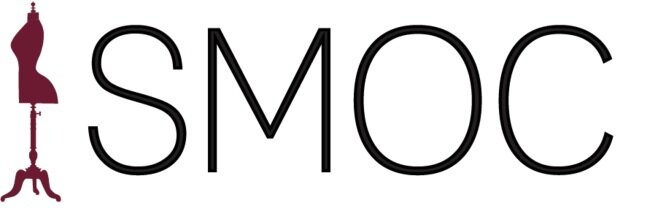Dress and Metaphor
SMOC’s knowledgeable curator, Ivan Sayers, has been known to comment on the transition from the full- figured clothes of the pre-Great War to the more maidenly styles of the wartime period, seeing scope for working out the powerful symbolism implicit in clothes.
In writing this article I am attempting to kill two birds with one stone. First, I hope the article will be reasonably interesting to those of us would like fashion history. Second, I am currently researching a scholarly essay on the creation of a World War One convalescent hospital and am adrift among conflicting themes. The convalescent hospital, located in Putney England, was founded by Canadian buccaneering entrepreneur called Perkins Bull. The family wisdom was he created the hospital--for Canadian officers only-- based first in his own large home, and then in a rented house nearby, in a bid for a British knighthood or peerage.
Dorothy Bull
The illustration above is a portrait of Bull’s daughter Dorothy in her uniform as commandant of the hospital. Her father had personally designed the volunteer nurses’ outfits and went out of his way to recruit girls from upper-crust Canadian families to work at the hospital. Under the supervision of a professional nurse they mainly attended to the cooking, the serving of meals, as well as performing basic nursing and housework. In a convalescent hospital, most of the patients were recovering from wounds and illnesses and largely needed rest.
Perkins (I think I can address him familiarly as he was my husband’s very distant cousin) in creating the uniform chose to emphasis the feminine to the extreme. The British Journal of Nursing reported that the dresses were a shade of pink with transparent aprons and an army cap. From photos and Dorothy’s portrait the volunteers were appear to me to be wearing nursing veils. All proudly wore the red Canadian ensign on their left arm. The white veils convey a nun-like innocence while the pink dresses and diaphanous aprons seem to me a subtle leer.
It is a cliché that the Great War was a mythic moment in the creation of a Canadian national will, but the nascent nation nearly torn itself apart and bankrupted its treasury to pursue war in Europe. Young men rushed to the service of their King-Emperor only to find a killing field. A vocal imperialist, Perkins Bull, made numerous speeches stressing the heroic efforts that the Dominions were making to fight German aggression. Like the soldiers, they cared for, the nurse volunteers had crossed an ocean to take up the torch of service. In analyzing the daily hospital routine and reviewing the letters written from the hospital, it is difficult to unravel how these various individuals came to together. In sketching out my article, I probe to understand the motivations of Perkins Bull, or the men who would shortly return from the quiet hospital corridor to a machine-riddled wasteland, or comprehend the mind-set of their female help-mates who would helplessly watch them go. By the war’s end, a majority of the nurse volunteers married soldiers they had met at hospital. At these weddings, Perkins in top hat and tails—resembling a house-broken satyr—always gave the Vestal virgin-like brides away.
Most of the young women working at the Perkins Bull Hospital for Convalescent Canadian officers came from Toronto, but there was one volunteer, Helena Secord, who grow up in the west and retired to Victoria in the 1960s. It would be wonderful if anyone knows if she left papers or photos related to her wartime experiences.
Denise Jacques, denise@smoc.ca

